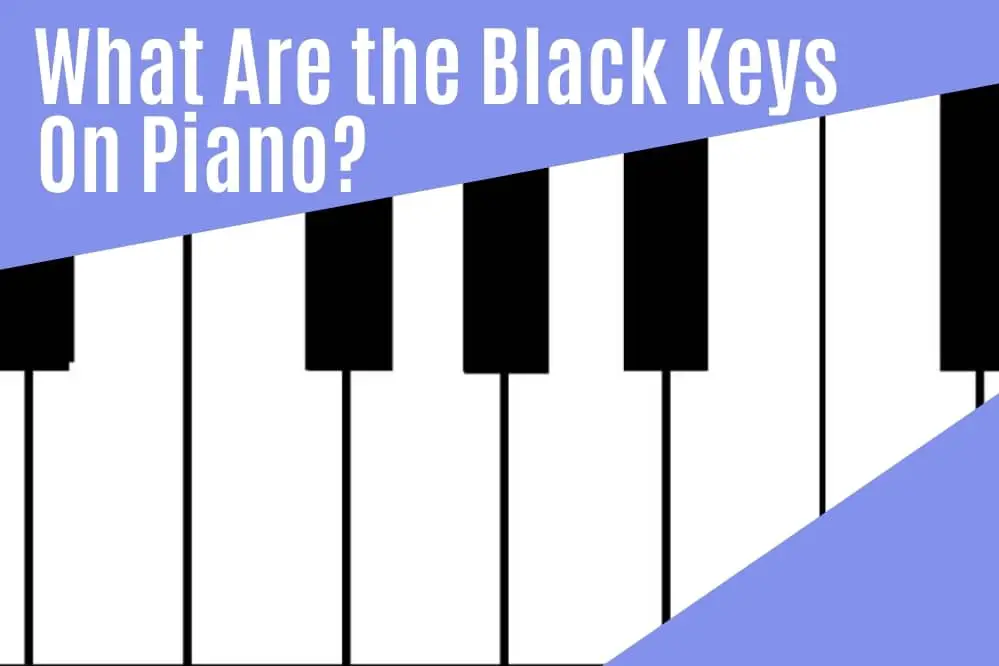This is a beginner guide to black keys on piano.
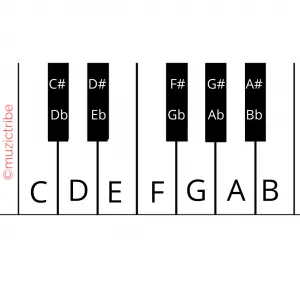
Black keys on a piano are half-tone(half-step) notes of white keys.They are called sharps and flats. They are raised up, slender and shorter than white keys on piano/keyboard.They have the same name as it’s closest white key with added #(sharp) and b(flat).
- Black key to the right of white key is sharp.
- Black key to the left of white key is flat.
So when do we call it sharp and when do we call it flat?
It depends on what white note you are comparing to black note.
If you are on C note and want to play half-step higher than you will call it C sharp. But if you were playing D note and want to go half-step lower than you will call it D flat.
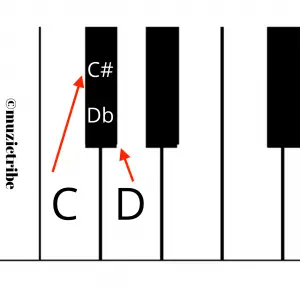
Sharp and Flat are semi-tone above and below respectively of white key you are playing. They represent half-step interval.
Remember that not all sharps and flats are black keys.Since there are no black keys between B and C and between E and F, B can also be called C flat and C can be called B sharp. Similarly E can be called F flat and F can be called E sharp.
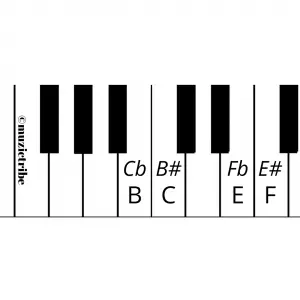
How many black keys does a piano/keyboard have?
It depends on size of your piano/keyboard.
One octave has 7 white keys and 5 black keys, totaling 12 notes.
Black keys are divided into group of two and group of three.
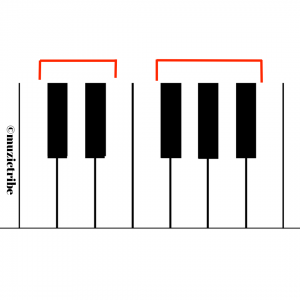
25 keys keyboard has 10 black keys.
49 keys keyboard has 20 black keys.
61 keys keyboard has 25 black keys.
76 keys keyboard has 31 black keys.
88 keys keyboard has 36 black keys.
Significance of Black Keys
Black keys make identifying white keys easier. What do I mean by that?
Imagine, piano/keyboard without any black keys. It would look something like the image below.

Locating keys on such piano/keyboard would be a herculean task. Identifying octave range that you are playing would be equally difficult.
Now try locating C in normal piano.
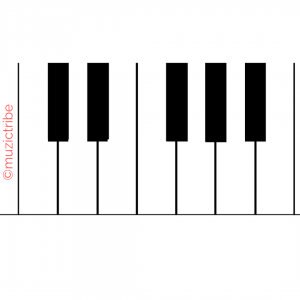
We know black keys are separated in group of two and group of three. And C is right before the group of two black notes. See how easy that was? Black key gives you the visual cue.
Why white and black color?
Now you might wonder why not any other contrasting color? Why is it always white and black color ?
Well, historically pianos were built with ivory(white keys) and black rosewood(black keys). Interestingly, black keys were not always black and white keys were not always white. It was reversed. Black keys were white and white keys were black. But piano/keyboard took it’s present form because when bottom keys were all black it was difficult to see the space between the keys, making difficult to identify the location of key. White made it easier to tell keys apart.

